The Making Of The Lexus LFA Supercar: An Inside Report, Chapter 5: Exam Week.

On the LFA’s in-house test track. Each car gets tested for some 50 miles
In this week-long report, we followed the Lexus LFA from raw fiber to body, paint, and assembly. In this final chapter, we take it on the test track in Motomachi.
Each and every LFA that rolls off the line is checked like no other car. 7,000 items of the LFA, all previously checked, counter-signed, eternalized in evidence sheets, are checked again. Each check again is eternalized in evidence sheets. When I said it takes 8 days to make an LFA, I lied. It takes 8 days to make one, and then it takes a full additional week to check it.
LFA test driver Nobuaki Amano
Nobuaki Amano has “one of the coolest jobs in the world,” at least according to Lexus-internal propaganda. Amano is the test driver. No LFA leaves the LFA Works without Amano having driven it up and down and up and down the test track that is nestled into an approximately mile long stretch along the eastern fence line of Motomachi. That track is good for 130 mph, if we want faster, we would have to go to Toyota’s Higashi Fuji proving grounds.
This is work?
I was in an LFA a year ago, that was in city traffic in Yokohama, hardly the place to put it through its paces. Going up and down along that two lane track is different. I hear the engine sing all the way into the soprano octaves while Amano paddle-shifts through the LFA’s sequential gears. Some likened the sound to “the roar of an angel”, some to “an F1-inspired tune.” Lesser poets could compare it to the sound of a circular saw.
25 times up, 25 times down the road
I leave Amano to his testing business. He travels 25 times up and 25 times down that fence line in each LFA, conducting a set test regimen of 54 items, and taking copious notes over 4 hours. The logs become part of the evidence sheet collection.
These tires will be used to avoid wear and tear of the customer’s rubbers
Before Amano takes the car out on a test run, it gets a set of tires that is reserved for that purpose, sparing the customer wear, tear and cuffs. The odometer will have Amano’s 50 or so miles on it. They come with a note explaining that this is part of the Lexus LFA build process.
Much prettier visitors have been here
Miss Universe.
It is late in the afternoon when we get back to the spartan meeting room in the LFA Works. We spent a full day trying to cover the two weeks it takes to build and test an LFA. In a corner is a cut out figure of Akio Toyoda in racing gear, the figure even shorter than the real life Toyoda. On the wall is a memento from a previous and much prettier visitor to the LFA Works, Miss Universe 2007, Riyo Mori, her autograph is obscured by a less romantic sample of a forged aluminum gas pedal and a magnesium paddle shifter.
Take a number
In the morning, we saw LFA number 369 in its early stages, two weeks more, and it will be on its way to its owner. By the end of the year, the limit of 500 LFA will be reached, and the limit will not be extended. All are spoken for, try to order one now, and you will be turned down, with many apologies, but nonetheless firmly. As a matter of fact, the LFA was sold before production started in late 2010. The 500-unit quota was reached in April 2010, those who wanted could try their luck on a waiting list. For two years, the people at the LFA Kobo worked through their order book, one car per day.
Tanahashi shows his diary
I only have two more questions for Tanahashi:
Why?
And what’s next?
Reason why.
Even before the LFA production had started, Toyota made it known that there would be no profit on the LFA. Know just a little about cars, and this will be immediately obvious. The price tag for the development of a regular car is said to be in the neighborhood of a billion dollars. Now imagine how much it costs to develop one that was 10 years in the making, that shares only five parts with other cars of the mothership, a car for which a completely new production technology had to be invented. My walk through the factory sealed my impression of a giant money sink. The 500 people who are lucky to get an LFA are even luckier: They get a deal. The true cost of that handmade carbon fiber car is astronomically higher. So why make it?
I put the question to Tanahashi. He won’t comment on specific plans, but in a roundabout way, he confirms that this is a test bed for how mass market cars in a still far away future might be built. Future cars must use much less of whatever energy they will use. The key to that is weight loss.
Tanahashi’s comrade-in-arms, deputy chief engineer Chiharu Tamura (they met right out of school at Toyota, working on the front and rear end of the first front drive Celica) has a 1968 Subaru 360 at home. This car reached 66 mpg in 1968. Ever since, efficiency improvements bought with billions of research money were eaten by a ravenous monster called weight. 44 years later, the Prius c developed by Tanahashi’s colleague Satoshi Ogiso gets 53 mpg. Is that progress?
Picture-perfect
When I met Tanahashi in the morning, he said that “the ideal material for a car body is very strong and very light.” Carbon fiber is that material, but it is far from affordable. As long as people put strips of fabric into a mold by hand, as long as a part must be baked for hours, the price of this material will remain in the stratosphere. Tanahashi and his people are working on bringing this price down to earth.
Get moving.
“Pre-preg is much too slow,” says Tanahashi, referring to the method of manually putting strips of resin-saturated carbon fabric into molds, and baking it in an autoclave. “In the years to come, Resin Transfer Molding will be the mainstay of carbon fiber making.”
RTM, the making of carbon fiber in a press, cuts the time of making a part in half. Right now, this half still is 8 hours instead of 16 hours, unacceptable for production runs of several thousand per day. “With cutting-edge technology, the time can be brought down to 10-15 minutes in the press,” says Tanahashi. Much better, but still much too slow. A stamp press cycle time for metal is about six seconds, that’s ten parts per minute, not four per hour.
“I am very confident, that with some more research, CFRP will be ready for volume production,” says Tanahashi. “How quickly and when, I am not sure. We are moving in that direction and we are making progress.” The team around Tanahashi will remain busy for a long time.
Life after the LFA
Speaking of keeping busy, I ask what will come after the LFA.
Tanahashi facetiously says, “the LFB.”
When confronted with the rumor that the next car will be a million dollar supercar that is made in the homeopathic quantity of 100, Tanahashi wipes it off the table: “No, not true at all.”
So will the next car be a high-end CFRP Lexus under $100,000 at maybe 5,000 units a year? Tanahashi pauses, thinks for a few seconds, reviews where he and his team are on that road to the future, then says:
“It’s not that simple.”
What will happen to the LFA Works at the end of the year? Will Tanahashi, now 59, simply go into retirement? Will the 170 associates who make the LFA go back to making Crowns, Corollas and Camrys?
Tanahashi collects his thoughts, then says:
“CFRP is a very promising material. Even after the LFA project finishes, the carbon factory will be well utilized.”
With that thought, we bid Tanahashi and his team adieu. I am sure we will meet again. Somewhere.
Jyane!
Monday, July 9: From A Bar To Bar None. How the LFA was born, and why it is made from carbon fiber.
Domo arigato gozaimashita
We thank the public affairs people in Tokyo, who, after having recovered from their heart attack, tirelessly supported the project. We thank Paul Nolasco who translated a pile of pages with dense technical Japanese content into a pile of pages with equally dense English content. We thank the anonymous man who volunteered his size 11 ½ toecaps. We thank you for reading and commenting.
Thetruthaboutcars.com extends an invitation to all automakers to make more Behind the Scenes reports possible.
On the LFA’s in-house test track. Each car gets tested for some 50 miles
LFA test driver Nobuaki Amano
This is work?
25 times up, 25 times down the road
These tires will be used to avoid wear and tear of the customer’s rubbers
Much prettier visitors have been here
Take a number
Tanahashi shows his diary
Picture-perfect
Jyane!

Bertel Schmitt comes back to journalism after taking a 35 year break in advertising and marketing. He ran and owned advertising agencies in Duesseldorf, Germany, and New York City. Volkswagen A.G. was Bertel's most important corporate account. Schmitt's advertising and marketing career touched many corners of the industry with a special focus on automotive products and services. Since 2004, he lives in Japan and China with his wife <a href="http://www.tomokoandbertel.com"> Tomoko </a>. Bertel Schmitt is a founding board member of the <a href="http://www.offshoresuperseries.com"> Offshore Super Series </a>, an American offshore powerboat racing organization. He is co-owner of the racing team Typhoon.
More by Bertel Schmitt
Latest Car Reviews
Read moreLatest Product Reviews
Read moreRecent Comments
- ToolGuy I am slashing my food budget by 1%.
- ToolGuy TG grows skeptical about his government protecting him from bad decisions.
- Calrson Fan Jeff - Agree with what you said. I think currently an EV pick-up could work in a commercial/fleet application. As someone on this site stated, w/current tech. battery vehicles just do not scale well. EBFlex - No one wanted to hate the Cyber Truck more than me but I can't ignore all the new technology and innovative thinking that went into it. There is a lot I like about it. GM, Ford & Ram should incorporate some it's design cues into their ICE trucks.
- Michael S6 Very confusing if the move is permanent or temporary.
- Jrhurren Worked in Detroit 18 years, live 20 minutes away. Ren Cen is a gem, but a very terrible design inside. I’m surprised GM stuck it out as long as they did there.





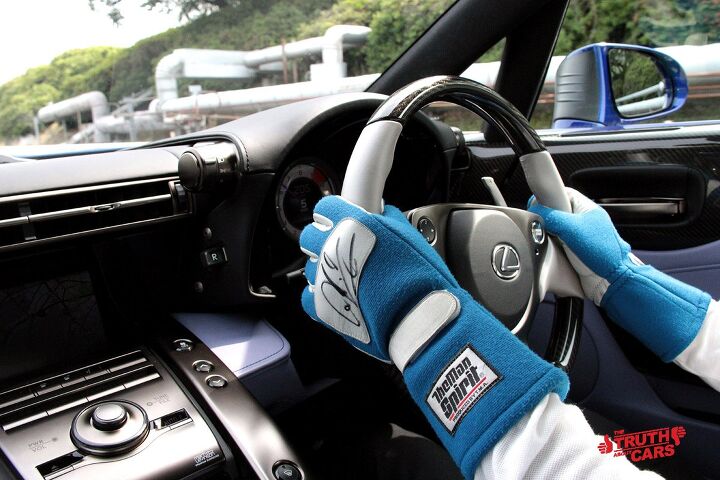


























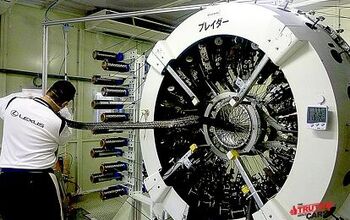
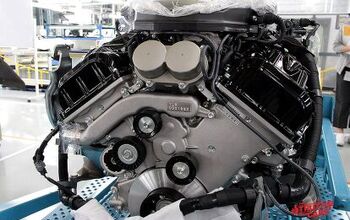

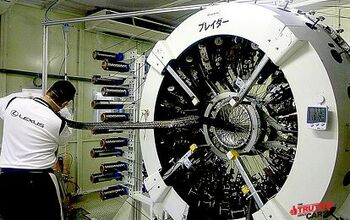
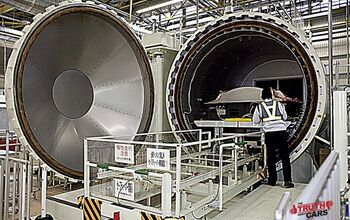










Comments
Join the conversation
Great series of articles. Nice one.
Driving an LFA comes down to one word: Special BD